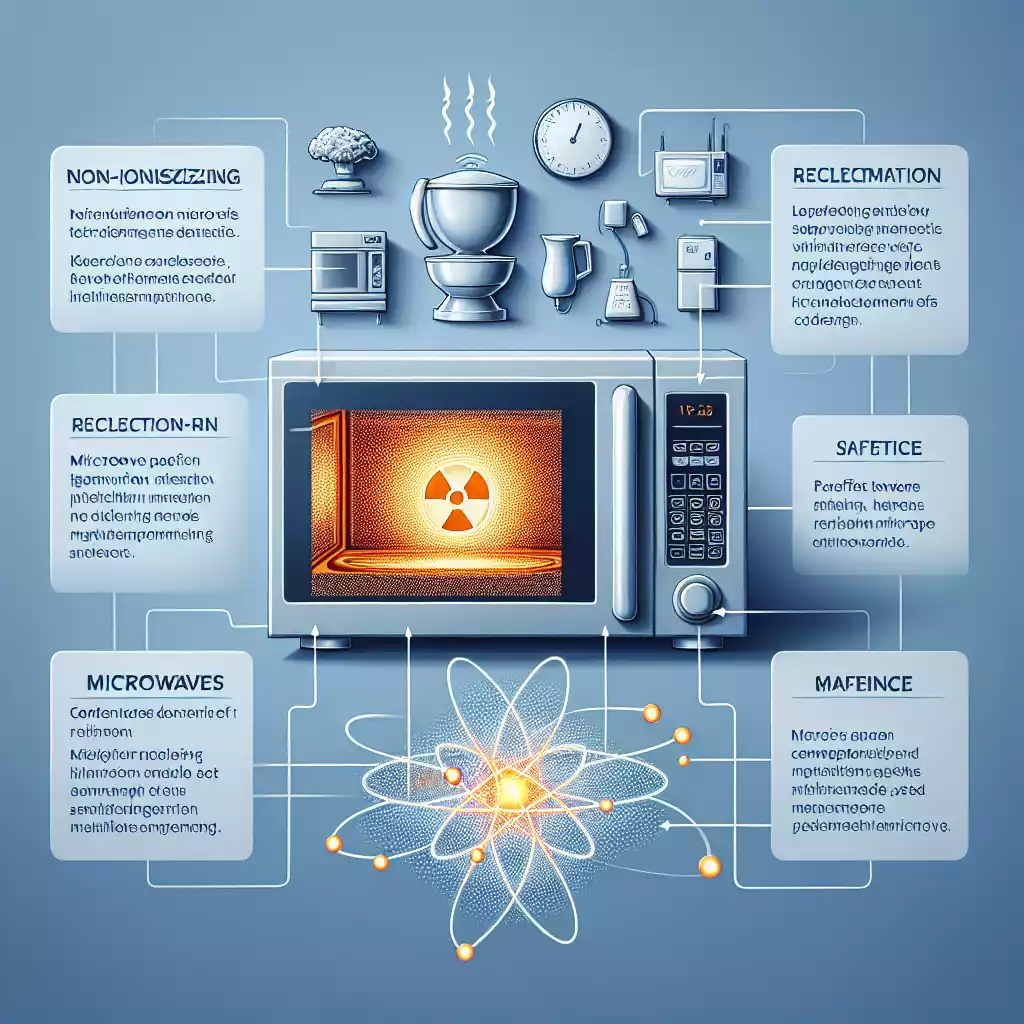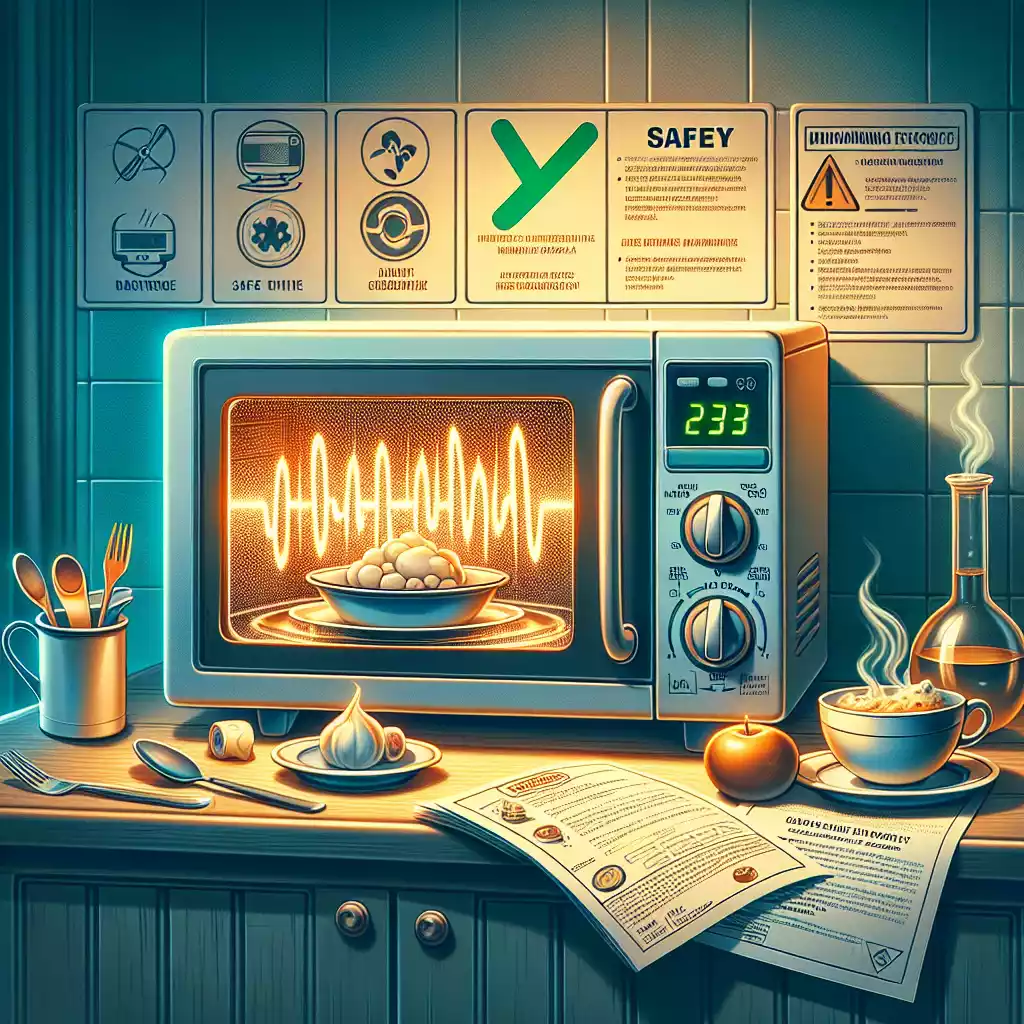Introduction to Microwave Safety
Microwaves have become an essential part of our kitchens, making meal preparation quicker and more convenient. But, the question of their safety has been a topic of debate since their inception. To understand whether microwaves are safe, it’s essential to delve into their history, how they work, and the health concerns associated with their use.
The microwave oven was invented accidentally by Percy Spencer in the 1940s while working on radar technology. Since then, microwaves have evolved and become a staple in households worldwide. Despite their popularity, concerns about radiation, health risks, and food safety persist. In this article, we will explore these concerns in detail, provide safety tips, and debunk common myths.
Understanding How Microwaves Work
Basic Principles of Microwave Operation
Microwaves use electromagnetic radiation to heat food. This radiation is non-ionizing, meaning it doesn’t have enough energy to remove tightly bound electrons from atoms or molecules. Instead, it causes water molecules in food to vibrate, producing heat that cooks the food.
Common Misconceptions About Microwaves
Many people believe that microwaves can cause cancer or that they make food radioactive. These misconceptions stem from a lack of understanding of how microwaves work. It’s important to note that microwaves do not change the chemical structure of food, nor do they make it radioactive.
Health Concerns Related to Microwaves

Radiation Emission and Exposure
Microwaves emit radiation, but the levels are well within the safety limits set by regulatory bodies. The design of microwave ovens ensures that the radiation is contained within the unit and does not leak out. Modern microwaves come with multiple safety features to prevent radiation leakage.
Potential Health Risks and Scientific Studies
Several studies have investigated the potential health risks of microwave radiation. The consensus among scientists is that microwaves, when used correctly, do not pose significant health risks. Long-term exposure to low levels of microwave radiation has not been shown to cause harm.
Microwave Safety Standards and Regulations
Government and Industry Guidelines
Governments and industry organizations have established strict guidelines to ensure the safety of microwave ovens. These guidelines cover radiation limits, manufacturing standards, and safety features. Regular inspections and testing ensure that microwaves on the market comply with these standards.
Safety Features in Modern Microwaves
Modern microwaves are equipped with several safety features, including:
• Interlock mechanisms: Prevent the microwave from operating when the door is open.
• Shielding: Contains radiation within the oven.
• Automatic shut-off: Turns off the microwave if it overheats.
Safe Practices for Microwave Use
Proper Usage and Maintenance Tips
To ensure your microwave remains safe to use, follow these tips:
• Regularly clean the microwave to prevent food buildup.
• Inspect the door and seals for damage.
• Use microwave-safe containers to avoid chemical leaching.
Common Mistakes to Avoid
Avoid these common mistakes to ensure safe microwave use:
• Do not operate an empty microwave.
• Avoid using metal containers or aluminum foil.
• Do not heat sealed containers as they may explode.
Microwaves and Food Safety
Effects of Microwaves on Nutrient Retention
Microwaving food can preserve nutrients better than some other cooking methods. The shorter cooking times and lower temperatures help retain vitamins and minerals. However, overcooking can still lead to nutrient loss.
Preventing Food Contamination
To prevent food contamination:
• Stir and rotate food during cooking to ensure even heating.
• Cover food to prevent splatters and maintain moisture.
• Use a food thermometer to check that food reaches safe temperatures.
Environmental Impact of Microwaves
Energy Consumption and Efficiency
Microwaves are generally more energy-efficient than conventional ovens because they cook food faster. However, their energy consumption can vary based on usage patterns and the model’s efficiency.
Disposal and Recycling of Microwave Ovens
Proper disposal and recycling of microwaves are crucial to minimize environmental impact. Many communities offer recycling programs for electronic waste, including microwaves. Check with local waste management services for guidelines.
Technological Advances in Microwave Safety
Innovations in Microwave Design
Recent innovations in microwave design focus on improving safety and efficiency. Features like inverter technology provide more consistent heating, while smart sensors adjust cooking times and power levels for optimal results.
Future Trends in Microwave Technology
Future trends in microwave technology may include:
• Improved energy efficiency
• Enhanced safety features
• Integration with smart home systems
Addressing Common Myths About Microwaves
Debunking Popular Myths
• Microwaves cause cancer: No scientific evidence supports this claim.
• Microwaves make food radioactive: Microwaves do not alter the chemical structure of food.
Facts vs. Fiction
Understanding the facts can help dispel myths:
• Fact: Microwaves use non-ionizing radiation.
• Fiction: Microwaves destroy all nutrients in food.
Consumer Tips for Choosing a Safe Microwave
Key Features to Look For
When choosing a microwave, consider these features:
• Safety certifications
• Interlock mechanisms
• Automatic shut-off
Recommended Brands and Models
Some reputable brands known for their safety and reliability include:
• Panasonic
• Samsung
• LG
Microwaves in the Modern Kitchen
Versatility and Convenience
Microwaves offer versatility and convenience, making them ideal for:
• Quick reheating
• Defrosting
• Cooking a variety of foods
Alternative Cooking Methods
While microwaves are convenient, consider alternative methods for certain dishes:
• Ovens and stovetops for baking and frying
• Slow cookers for stews and soups
FAQs on Microwave Safety
FAQ 1: Is it safe to stand near a microwave while it’s operating?
Yes, modern microwaves are designed to contain radiation, making it safe to stand near them while in use.
FAQ 2: Can microwaves cause cancer?
No, there is no scientific evidence linking microwave use to cancer.
FAQ 3: Do microwaves destroy nutrients in food?
Microwaving can actually preserve nutrients better than some other cooking methods due to shorter cooking times.
FAQ 4: Is it safe to microwave plastic containers?
Only microwave-safe plastic containers should be used to avoid chemical leaching.
FAQ 5: What should I do if my microwave starts sparking?
Immediately turn off the microwave and unplug it. Check for metal objects or damage inside the oven.
Conclusion
Understanding the safety of microwaves involves examining their history, operation, health concerns, and safety standards. By following proper usage guidelines and debunking common myths, you can safely enjoy the convenience of microwaves in your kitchen. With advancements in technology and strict regulations, modern microwaves are designed to be safe and efficient.

